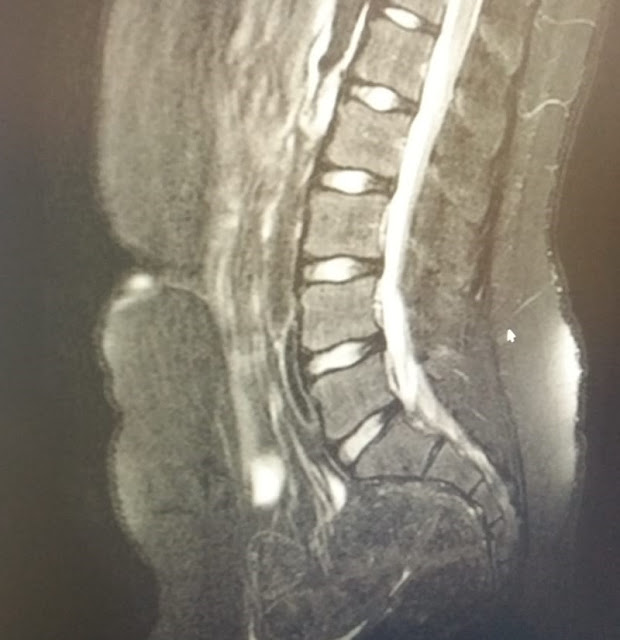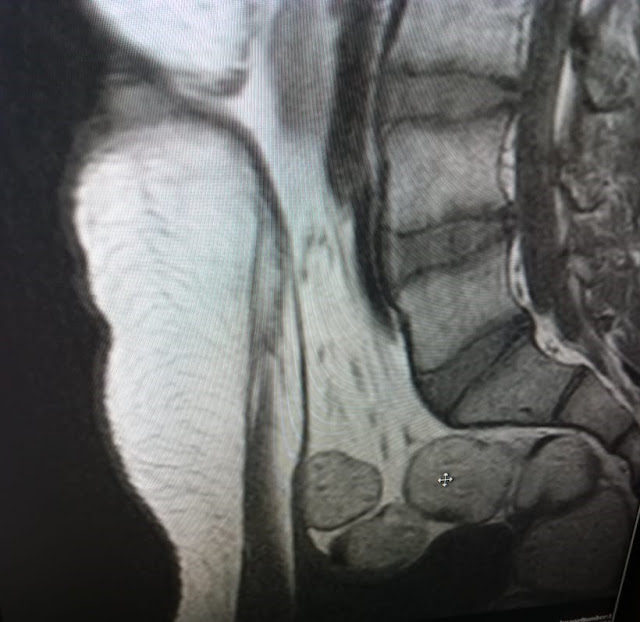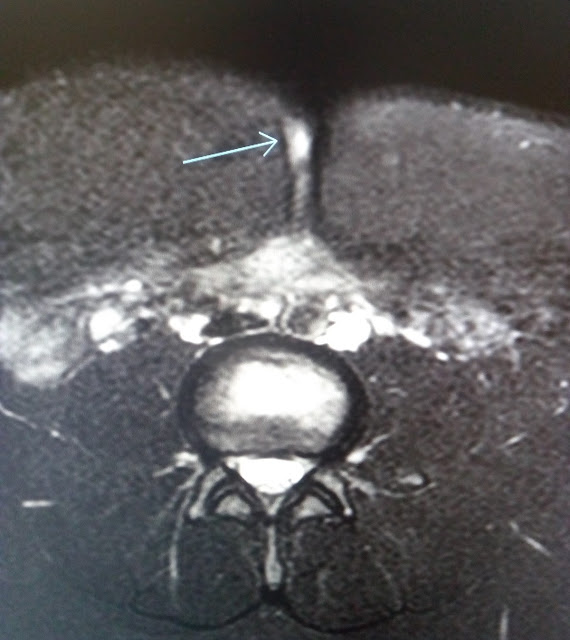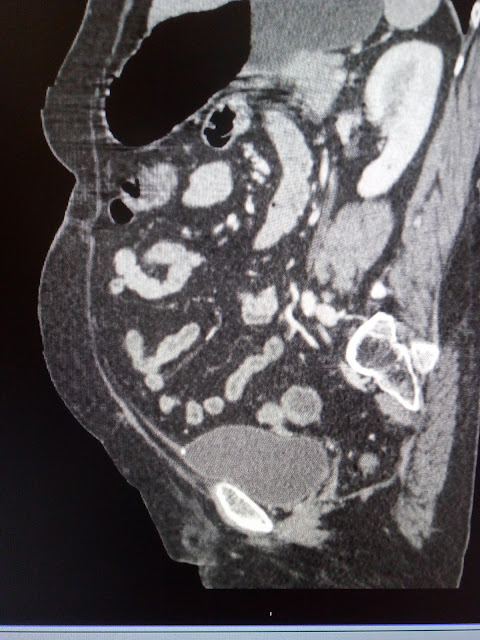Subarachnoid versus intravenous dexmedetomidine and fentanyl for minimizing stress response in laparoscopic cholecystectomy
Mofeed Abdalla
The Scientific Journal of Al-Azhar Medical Faculty, Girls 2018 2(3):137-143
Background The magnitude of stress response depends on several factors such as duration and intensity of surgical trauma, patient’s age, surgical method, anesthetic technique, blood loss, and postoperative pain. Aim of the work The aim of this work was to study the effect of intravenous versus intrathecal dexmedetomidine and fentanyl on stress response during laparoscopic cholecystectomy. Patients and methods Sixty patients fulfilling the inclusion criteria who were undergoing laparoscopic cholecystectomies were randomly assigned to receive either intravenous fentanyl and dexmedetomidine (group I) or intrathecal fentanyl and dexmedetomidine (group II). Mean arterial blood pressure and heart rate were recorded before induction of anesthesia (T0), 5 min after intubation (T1), 30 min after start of surgery (T2), at skin closure (T3), 6 h postoperatively (T4), and 24 h postoperatively (T5). The number of patients who required intraoperative intravenous fentanyl and total intraoperative fentanyl consumption (µg), and the number of patients who required intravenous morphine at the end of surgery were recorded. Visual analogue scale and total postoperative morphine consumption (mg) at the end of surgery (M0), and at 6, 12, 18, and 24 h (M1, M2, M3, and M4, respectively) were recorded. Blood interleukin-6, cortisol, and glucose were measured before anesthesia (F0) and after recovery (F1). Postoperative complications were recorded. Results Heart rate and mean arterial blood pressure were statistically lower in group II at T2 and T3. The number of patients requiring intraoperative intravenous fentanyl and total intraoperative fentanyl consumption (µg), and the number of patients requiring intravenous morphine at the end of surgery were statistically lower in group II. Visual analogue scale and postoperative morphine consumption (mg) were statistically lower in group II at M0 and M1. Blood cortisol and blood glucose level were statistically lower in group II at F1. There were no statistical differences as regards complications. Conclusion Apart from lowering heart rate and BP, intrathecal dexmedetomidine and fentanyl was superior to intravenous dexmedetomidine and fentanyl, wherein it lowered pain score and analgesic consumption with attenuation of stress response.
|
Comparison between subtenon block and extraconal block during cataract surgery
Ahmed M Abd El-Galeel, Osama I.A Badr, Khaled G Mohamed
The Scientific Journal of Al-Azhar Medical Faculty, Girls 2018 2(3):144-149
Background Most ophthalmic procedures are performed under local anesthesia, and cataract extraction is the most frequently performed surgery in elderly patients. The aim of this study is to compare the intraoperative hemodynamic variables, efficacy, and efficiency of extraconal block versus subtenon block with low concentration of local anesthetic during cataract surgery. Patients and methods This prospective, randomized, and single-blind study was done on 80 patients American Society of anesthesiologists status I–III undergoing cataract surgery, of which 40 patients underwent subtenon block (group S) and 40 patients underwent extraconal block (group E). Five minutes after the start of anesthetic monitoring care, 5-ml mixture of lidocaine 1% and bupivacaine 0.25% containing 100 IU hyalorunidase, in a mixture ratio of 1 : 1, was injected intraocular slowly. Patients were monitored for intraoperative hemodynamics, ocular movement during surgery, and intraoperative pain sensation as primary outcome, and onset of blockade, pain assessment within 30 min postoperatively, number of patients need rescue dose, surgeon discomfort, and postoperative complications as secondary outcomes. Results Mean arterial blood pressure and heart rate in group S were significantly lower than those in group E but within safety margin. No significant difference was found between the two groups regarding full range of eye movement, surgeon’s discomfort grade during cataract surgery, and also, intraoperative pain sensation. The onset of blockade was significantly faster in group S than group E. Although group S had better postoperative analgesic effect than group E, postoperative rescue dose was of insignificant value. Conclusion Subtenon block seems to be a better local anesthetic technique than extraconal for cataract surgery, as it is faster, has less surgeon discomfort grading, and better postoperative analgesia. However, on the contrary, both subtenon and extraconal blocks are equally effective in pain control during surgery and also have good ocular akinesia during operation.
|
Endometrial hyperplasia versus carcinoma: does phosphatase and tensin homolog immunohistochemical expression differentiate between them
Marwa A El Kholy, Eman A El Kholy
The Scientific Journal of Al-Azhar Medical Faculty, Girls 2018 2(3):150-155
Context Phosphatase and tensin homolog (PTEN) is a protein that acts as a tumor suppressor by dephosphorylating the lipid second messenger phosphatidylinositol 3,4,5-trisphosphate. Loss of PTEN function and mutation in PTEN gene have been implicated in the pathogenesis of endometrial carcinoma (EC). Objective The aim was to evaluate the immunohistochemical expression of PTEN in endometrial hyperplasia and EC and to evaluate the relationship between its expression and tumor grade in EC. Materials and methods Specimens included 16 cases of endometrial hyperplasia without atypia, six cases of atypical endometrial hyperplasia, and 18 EC specimens. Immunohistochemical staining for PTEN was performed using diaminobenzidine detection kit on formalin-fixed and paraffin-embedded tissue samples. Tumor tissue blocks and clinical data were collected from the files of the Pathology Department of Al-Zahraa University Hospital during the period 2010–2014. Results Immunohistochemistry showed that PTEN was positive for nuclei and cytoplasm of glandular endometrial cells. The PTEN expression was decreased significantly in atypical hyperplasia or EC compared with simple or complex hyperplasia (P0.041). In EC, we proved that PTEN expression is downregulated in high-grade tumors. Conclusion A positive PTEN expression correlates significantly with hyperplasia without atypia and well-differentiated tumors. The downregulation of PTEN indicates a more malignant phenotype.
|
Brain natriuretic peptide for prediction of mortality in patients with sepsis
Amani K Mohamed, Nagwa Abd El-Ghaffar Mohamed, Nalgaa Abou-Elfattah Tawfik, Marwa Yahia Mohamed
The Scientific Journal of Al-Azhar Medical Faculty, Girls 2018 2(3):156-162
Introduction Worldwide, sepsis is one of the leading causes of morbidity and mortality. Patients are at high risk for irreversible organ failure and a lethal course. About 60 000 individuals die from sepsis annually, and survivors have a reduced quality of life. In addition, sepsis places a considerable economic burden on the society. Early and comprehensive treatment improves outcome significantly. Brain natriuretic peptides (BNPs) are powerful predictors of death and major events in patients with stable coronary disease and pulmonary embolism. Several prospective studies have been carried out to investigate the potential role of BNPs in predicting mortality in septic patients in ICUs. The aim of this prospective study was to evaluate BNP for the prediction of mortality and myocardial dysfunction in severe sepsis and septic shock. Patients and methods This prospective study was carried out on 50 patients including group I, patients with sepsis, group (II), patients with severe sepsis, and group III, patients with septic shock. This study was carried out in the ICU of the Internal Medicine Department, Al-Zahraa University Hospital, in the period between January 2013 and March 2014 with written consents from our patients according to the ethical committee of the university. BNPs were determined by enzyme-linked immunosorbent assay. Results There was a highly statistical difference in the mean±SD of the BNP levels in group III (901.77±259.6) compared with group II (610.84±102.46), P value less than 0.01; also, there was a statistical difference in the BNP levels in group III (901.77±259.6) compared with group I (217.4±81.16), P value less than 0.01, whereas there was a statistically significant difference in group II (610.84±102.46) compared with group I (217.4±81.16), P value less than 0.05. In terms of the correlation between the BNP levels and other parameters of the patient groups, there was a highly positive significant correlation between BNP levels and the acute physiology and chronic health evaluation (APACHE II) score, the Sequential Organ Failure Assessment score, and white blood cells count. A significant positive correlation was found between BNP levels and prothrombin concentration (PC). There was a nonsignificant correlation between BNP and age, creatine phosphokinase, creatine kinase-MB, serum glutamic oxaloacetic transaminase, serum glutamic pyruvic transaminase, prothrombin time, international normalized ratio, and length of stay. Conclusion Our results suggested that an elevated BNP level may prove to be a powerful predictor of mortality in patients with sepsis. Future larger and more adequately powered prospective studies are warranted to clarify the prognostic value of BNPs in conjunction with other biomarkers.
|
Expression of TWIST1 and CD44 as diagnostic and prognostic biomarkers in patients with gastric cancer
Marwa A El Kholy, Hala A El Sayed, Eman M Ahmed
The Scientific Journal of Al-Azhar Medical Faculty, Girls 2018 2(3):163-170
Objective The aim of this study was to investigate the association of TWIST1 and CD44 in gastric cancer (GC) with clinical parameters and their relation to prognosis, which may be beneficial for targeted therapeutic strategies in the future. Materials and methods The material of this work consisted of 40 primary GC specimens from patients who underwent radical gastrectomy. Patients who received neoadjuvant chemotherapy or chemoradiotherapy, those who presented with other cancers at the same time, or the patients with incomplete clinical data were excluded from the study. Hematoxylin and eosin-stained sections from all cases were re-evaluated and further stained immunohistochemically using antibodies against TWIST1 and CD44. Results TWIST1 and CD44-positive expressions were significantly increased in GC cases of diffuse type (P=0.019 and 0.002, respectively). Moreover, there was a statistically significant correlation between both markers and tumor grade, stage, and lymphovascular invasion (P=0.027 and 0.010, P=0.002 and 0.012, and P=0.001 and 0.005, respectively). A statistically significant correlation was found between TWIST1 and CD44 expressions in GCs (P=0.000). Conclusion The presence of TWIST1-positive carcinoma cells and CD44-positive cancer stem-like cells in GC tissue can be used as a diagnostic tool for GC and regarded as a marker of poor prognosis in patients with GC, which may provide potential targets for GC therapy.
|
Homocysteinemia in relation to anemia in hypothyroid patients
Samia Souka, Hanaa Kandil, Soheir Korraa, Aida A Abdel Hameed, Marwa Hassan
The Scientific Journal of Al-Azhar Medical Faculty, Girls 2018 2(3):171-180
Background Anemia and hypothyroidism are both common diseases in the community. Homocysteine (HCY) levels are increased in patients with hypothyroidism and methylenetetrahydrofolate reductase (MTHFR) deficiency is the most common genetic cause of hyperhomocysteinemia. The aim of the present study was to evaluate the level of serum HCY in patients with hypothyroidism and to study the relation of associated anemia with the serum level of HCY and MTHFR gene in patients with hypothyroidism. Patients and methods The study was conducted on 60 adult women attending the Endocrinology Outpatient Clinic of Al-Zahraa Hospital between September 2014 and June 2015 for proper diagnosis and management. Individuals of the study were divided into two main groups: group I (GI) with 30 hypothyroid patients, where 13 of them were postsurgical cases, and group II (GII) with 30 euthyroid individuals as a control group. Diagnosis was based on thyroid-stimulating hormone level reference values. Patients in GI were further classified into two subgroups: mild hypothyroid (subgroup I) and overt hypothyroid (subgroup II). Patient and control groups also were classified into anemic and nonanemic subgroups according to hemoglobin levels. The selected hypothyroid patients were women under thyroid hormone replacement therapy. Blood sample was obtained for proper investigations. Complete blood count, routine blood chemistry, serum iron level, thyroid function tests, vitamin B12 level, serum homocysteine (HCY), and MTHFR were performed. We performed a pilot study on MTHFR gene polymorphism. The C677T MTHFR gene mutation was detected in three of 10 patients and in two of 10 controls. No evidence of TT MTHFR gene mutation was observed in both patient and control groups. IBM SPSS statistics (version 23.0, USA, 2015) was used for data analysis. Results revealed the presence of anemia according to hemoglobin level (<12 g/dl). In patients group (GI), 50% (15/30) as compared with 13.3% (4/30) in the control group (GII) had anemia. Serum iron level in patients group (GI) was deficient in 40% (11/30), whereas deficient in 16.7% (5/30) in control group (GII). Vitamin B12 deficiency was found to be 44% (11/25) in patients group (GI), whereas in the control group (GII) was 6.7% (2/30). Analysis by Wilcoxon’s rank sum test, homocysteine (HCY) serum level showed a highly significant increase among patients (GI) as compared with control (GII). Ranked Spearman’s correlation test for the patients (GI) and control (GII) showed a significant negative correlation between homocysteine (HCY) and MTHFR serum levels, whereas the correlation with red cell indices parameters was insignificant. Serum iron and B12 levels were significantly correlated in patient group (GI). Pearson χ2 tests were done between both patients and control groups for the presence of anemia, iron deficiency, and elevated serum homocysteine (HCY) level and all revealed statistically significant results. Conclusion There is no significant correlation between homocysteinemia and anemia. However, the strong association between anemia and hypothyroidism is attributed mainly owing to combined iron and vitamin B12 deficiencies. This might explain the decreased response to treatment among the selected hypothyroid patients.
|
Impact of direct-acting antiviral therapy in Egyptian patients with chronic hepatitis C and liver cirrhosis
Mohammed H Elnadry, Sherif A Abdel-Aziz, Mohammed Ghareb, Ali A Ahamad, Nagah M Abu-Mohammed, Marwan M Tayel
The Scientific Journal of Al-Azhar Medical Faculty, Girls 2018 2(3):181-188
Background and aims In Egypt, ∼14.7% of the population has hepatitis C infection and genotype 4 infection accounts for more than 90% of the hepatitis C virus infections. Available data with newer all-oral regimens in the treatment of genotype 4 infection suggest that sustained virological response (SVR) 12 rates in treatment-naïve cirrhotic and noncirrhotic patients are greater than 95%. The study aimed to evaluate the virological response 12 weeks after treatment (SVR12), change in the model for end-stage liver disease score, and adverse clinical events during the study period. Patients and methods This prospective study included 451 patients with chronic hepatitis C and liver cirrhosis over a 3-month period started at January 2017. And the study was ethically approved by the Medical Research Ethics Committee, Faculty of Medicine, Al-Azhar University. The enrolled patients were classified into three groups: group I included 162 patients with chronic hepatitis C and liver cirrhosis subjected to direct-acting antivirals (DAAs) therapy (100/162 compensated cirrhosis and 62/162 decompensated cirrhosis), group II included 234 patients known to have chronic hepatitis C without liver cirrhosis subjected to DAAs therapy, and group III included 55 patients with chronic hepatitis C and liver cirrhosis not subjected to DAAs therapy according to the national protocol of therapy (as a control group). Treatment was administered for 12 weeks that included variable regimens of DAAs according to the Egyptian Ministry of Health protocol. Results We included 451 patients with chronic hepatitis C infection and liver cirrhosis; 47.8% of the patients were male, 84.4% were treatment naive, and 54.9% had cirrhosis. Of the study participants, 150 patients in group I and 53 patients in group II received sofosbuvir+daclatasvir+ribavirin, 183 patients received daclatasvir+sofosbuvir (group II), seven patients in group II received sofosbuvir+ledipasvir, five patients received sofosbuvir+ledipasvir+ribavirin (in group I), and seven patients in group I and nine patients in group II received ombitasvir/paritaprevir/ritonavir+ribavirin. Twelve weeks after end of treatment (SVR12) were 91.3% and 96.5% observed in group I and group II, respectively irrespective of the regimen of therapy. Treated patients in group I had a mean negative change in model for end-stage liver disease (−0.722; SD, 2.603) representing an improvement in liver function, whereas untreated patients in group III showed a minimal mean positive change (0.00; SD, 2.92) representing a deterioration in liver function (P<0.001). Improvements were observed in the Child-score (Child–Pugh–Turcotte) in group I versus untreated patients in group III. Hepatic encephalopathy was evident in 6.1% of patients in group I after treatment versus 38.1% in untreated patients (group III), and ascites developed in 30.2% of patients after treatment (group I) versus 65.4% in untreated patients (group III). Conclusion Oral regimens of DAAs are effective in the treatment of hepatitis C virus infection even in patients with liver cirrhosis, leading to improvements in liver functions.
|
Studying the changes of ocular wavefront aberrations after neodymium : yttrium aluminum garnet laser capsulotomy
Nermeen M Badawi
The Scientific Journal of Al-Azhar Medical Faculty, Girls 2018 2(3):189-193
Aimof the study The aim of this study is to evaluate the changes of wavefront aberrations after performing neodymium : yttrium aluminum garnet (Nd : YAG) laser posterior capsulotomy for the management of posterior capsular opacifications. Patients and methods This study is a prospective study that was performed on 100 eyes of 87 patients with posterior capsule opacification following phacoemulsification, in the period from March 2017 to October 2017. A complete ophthalmic examination and optical wavefront imaging were performed to every patient. Patients underwent posterior capsulotomy using Nd : YAG laser with a follow-up period of 6 months. Results There were no significant changes in postoperative refraction at P value more than 0.05 still the best-corrected visual acuity showed a clinically significant at P value less than 0.05. The intraocular pressure was statistically significantly increased on the first postoperative day (P<0.05) but not in other postoperative visits. Regarding higher order aberrations there was a statistically significant improvement in total third-order aberrations (P<0.05), coma aberration (P<0.05), total fourth-order aberrations (P<0.05), spherical aberration (P<0.05), and total higher order aberrations (P<0.05) while quadrafoil and fifth-order aberrations showed no statistically significant changes. Conclusion Nd : YAG laser posterior capsulotomy causes a significantly decrease in wavefront aberrations in patients with posterior capsule opacification.
|
Bone mineral density in relation to polycystic ovary syndrome: an insight into irisin and insulin
Olfat Fawzy, Nagwa A Elghaffar, Eman Mahmoud, Abeer Helmy
The Scientific Journal of Al-Azhar Medical Faculty, Girls 2018 2(3):194-204
Background and aim Polycystic ovary syndrome (PCOS) is a complex metabolic and endocrine disorder. The influence of different metabolic and endocrine changes in women with PCOS and their relevance to bone status remains to be documented. Irisin is a newly identified adipo-myokine, which may play a role in the etiopathogenesis of PCOS as well as bone metabolism. The aim of the study was to assess bone mineral density (BMD) and serum irisin level in women with PCOS and to determine BMD relationship with irisin and other hormonal parameters. Patients and methods The study enrolled 80 women of reproductive age having PCOS and 15 age-matched and BMI-matched healthy women to serve as controls. A metabolic panel, reproductive hormones, and serum irisin level were measured. In addition, BMD of the spine and femur was also assessed using dual-energy X-ray absorptiometry. Results Serum irisin level, fasting insulin, and homeostatic model assessment of insulin resistance were significantly higher in the PCOS group compared with the control group. Receiver operating characteristic curve for serum irisin was done for the PCOS group and the control group and demonstrated that the cut-off value for serum irisin was 0.161 μg /dl. There was also a statistically significant difference between the PCOS group and the control group in BMD of spine and femur, being higher in the PCOS group. Logistic regression analysis has shown that serum irisin level, waist circumference, and fasting serum insulin were predictors for the z-score of spine in the PCOS group. Conclusion Serum irisin level may be considered as a novel biomarker for PCOS diagnosis. Circulating irisin in PCOS is strongly related to BMD. This suggests that irisin as an adipo-myokine may also be associated with bone metabolism.
|
Occult hepatitis B virus among patients with chronic hepatitis and hepatocellular carcinoma
Khodeir A Naeima, Abd-El-Samae M Eman, Aly R Dina, El-Moatassem M Ola
The Scientific Journal of Al-Azhar Medical Faculty, Girls 2018 2(3):205-211
Background Hepatitis B virus (HBV) infection is diagnosed when the circulating HBV surface antigen (HBsAg) is serologically detected. Occult HBV infection is defined as the infection state negative for HBsAg serology, but it has shown viral genome persistence in infected individuals. The aim of the study is to determine the prevalence of occult HBV among patients with chronic hepatitis negative to HBsAg in the presence or absence of hepatitis C virus (HCV) infection. Patients and methods This study was conducted on a total number of 55 patients with chronic hepatitis (liver cirrhosis in 44 cases, nonalcoholic fatty liver in six cases) and hepatocellular carcinoma in five cases. All studied cases were subjected to routine liver function tests, HBsAg, HBsAb, hepatitis c virus immunoglobulin G (HbcIgG), α-fetoprotein, HCV RNA, and HBV DNA detection. Result All cases were negative to HBsAg and HBsAb in the presence or absence of HCV infection. HBV DNA detection by real-time RT-PCR confirmed the positivity of HBV infection [occult hepatitis b infection (OBI)] in two (4.5%) out of 44 cases of cirrhotic liver and represented 3.6% of the total cases studied with a viral DNA of 116 and 159 copies/ml, respectively. One case of OBI had a high level of α-fetoprotein (392 Iu/ml) and the second case had high copies of HCV RNA 127 000 copies/ml, that is coinfection. HbcIgG was positive in 31.8% in cirrhotic patients (including one out of the two positive OBI). HCV RNA was negative in 100.0% of nonalcoholic fatty liver, positive in 39 (one was positive OBI) cases with cirrhosis with a median value of 45 000 copies and in four out of the five hepatocellular carcinoma cases with a median value of 1.85E+08. This is statistically significant (P=0.01). We come to the conclusion that occult HBV do exist in our community. The diagnosis of OBI should be based on high sensitivity of HBsAg and HBV DNA testing.
|



























